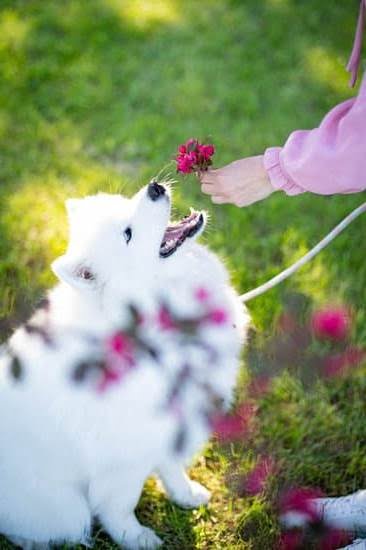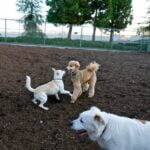Teaching a dog its name is an essential part of communication and ensuring its safety. Just like humans, dogs need to learn and recognize their own names in order to respond and understand commands effectively. A dog that knows its name is more likely to be obedient, easily trained, and responsive to its owner’s instructions. In addition, knowing your dog’s name can help prevent accidents and keep them out of harm’s way.
The psychology behind a dog’s name recognition is fascinating. Dogs are intelligent animals that have the ability to associate sounds and words with specific meanings. By teaching your dog its name, you are creating a strong association between the sound of its name and the concept of itself. This not only helps with training but also establishes a deeper bond between you and your furry friend.
Before diving into the training process, it is important to prepare the ideal environment for effective name training. Creating a calm and distraction-free space will help your dog focus on learning its name without any unnecessary interference or interruptions. By providing a conducive environment, you are setting yourself up for success in teaching your dog its name.
In the following sections of this article, we will guide you through step-by-step instructions on how to teach your dog its name – from building a foundation to utilizing positive reinforcement techniques. We will address common challenges that may arise during the process and offer solutions to overcome them. Additionally, we will explore advanced techniques and games to enhance your dog’s name recognition skills.
By consistently practicing the training techniques outlined in this article, you can maintain and strengthen your dog’s name recognition over time. We will also discuss practical applications and benefits of integrating name training into everyday life. Whether it is for obedience or safety reasons, teaching your dog its name is an important responsibility as a pet owner.
Understanding the Psychology behind a Dog’s Name Recognition
To effectively train a dog to know its name, it is crucial to understand the psychology behind their name recognition. Dogs are highly intelligent and can learn to associate their name with positive experiences and rewards. Recognizing their name allows them to respond to commands and communicate better with their owners.
One important aspect of a dog’s name recognition is the concept of classical conditioning. This refers to the process of associating a neutral stimulus (the dog’s name) with a meaningful stimulus (positive reinforcement or rewards). Over time, dogs learn that hearing their name leads to something enjoyable, such as treats, playtime, or praise. This association helps strengthen their response when called by their name.
Another psychological factor involved in name recognition is the dog’s natural instincts for socialization and bonding. Dogs are pack animals that rely on communication within their group. By teaching your dog its name, you are establishing a foundation for effective communication and building trust between you and your furry friend.
To facilitate optimal understanding and recognition of their name, it is essential to create an environment conducive to training. Minimize distractions during training sessions by choosing a quiet space away from other pets or family members. When beginning name training, keep sessions short but frequent to maintain the dog’s focus and interest.
Key Points
- Dogs associate their names with positive experiences through classical conditioning.
- Teaching a dog its name helps build effective communication and trust.
- Choose an ideal environment for training by minimizing distractions.
- Short but frequent training sessions maintain focus and interest.
By understanding these psychological principles behind a dog’s name recognition, you can approach their training in an informed manner. In the next section, we will provide a step-by-step guide on how to build the foundation for teaching your dog its name effectively.
Preparing the Ideal Environment for Effective Name Training
Creating a Distraction-Free Space
When training a dog to know its name, it is crucial to have an ideal environment that is free from distractions. This will create a focused and conducive space for effective name training. Choose a quiet area in your home where there are minimal distractions such as noise, people, or other animals. This will help your dog to stay attentive and engaged during the training sessions.
Gathering the Right Training Tools
Before you begin name training with your dog, it’s important to gather the right training tools. These will help you effectively communicate with your furry friend and provide the necessary reinforcement during the process. Some essential tools include:
- Treats: Use small, easily consumable treats that your dog finds highly rewarding. These treats should be reserved solely for training purposes to maintain their value.
- Clicker: A clicker can be an excellent tool for marking desired behavior and providing clarity to your dog during the name training process.
- Leash and collar: Having your dog on a leash will provide control and prevent them from wandering off during training sessions.
- Toys: Interactive toys can be used as rewards for your dog’s successful response to their name, keeping them engaged and motivated throughout the training session.
Setting Realistic Expectations
It is essential to set realistic expectations when preparing the environment for effective name training. Remember that every dog is unique and learns at its own pace. Some dogs may quickly grasp their name while others might take more time.
To avoid frustration, start with short training sessions of about 5-10 minutes each day and gradually increase the duration as your dog becomes more comfortable and responsive. Consistency and patience are key in creating an ideal environment for successful name recognition training.
By creating a distraction-free space, gathering the right tools, and setting realistic expectations, you are laying the foundation for effective name training with your dog. In the next section, we will delve into a step-by-step guide to teaching your dog its name and building a strong foundation for communication and safety.
Step-by-Step Guide to Teaching Your Dog Its Name
Teaching your dog its name is an essential first step in effective communication and ensuring their safety. By training your dog to know its name, you establish a strong foundation for further obedience training and build a bond based on trust and understanding. In this section, we will provide a step-by-step guide to help you successfully teach your dog its name.
- Create a Distraction-Free Environment: Start the training process in a quiet room with minimal distractions. This will help your dog focus solely on you and their training.
- Use Positive Reinforcement: Every time you say your dog’s name and they respond by making eye contact or looking at you, immediately reward them with praise or a treat. This positive association will reinforce their name recognition.
- Associate Their Name with Positive Experiences: Repeat the process of saying your dog’s name followed by praise or a treat multiple times throughout the day. Gradually, begin associating their name with activities they enjoy, such as playtime or going for a walk.
- Gradually Increase Distance and Distractions: Once your dog consistently responds to their name in a controlled environment, start introducing distractions gradually. Start with minor distractions like toys or mild sounds and gradually progress to more challenging ones like other animals or people.
- Practice Regularly: Consistency is key when training your dog its name. Set aside short training sessions throughout the day to reinforce their understanding of their name. Consistent practice will help solidify the learning process.
Remember that each dog is unique, so adjust the pace of training according to your pet’s individual needs and abilities. By following this step-by-step guide and utilizing positive reinforcement techniques, you can effectively teach your dog its name and set the stage for successful communication in the future.
Utilizing Positive Reinforcement Techniques to Reinforce Name Recall
Positive reinforcement is a highly effective method for teaching dogs to recall their name consistently. Dogs respond well to positive reinforcement because it strengthens the association between their name and the reward they receive when they respond correctly. By utilizing this technique, you can reinforce your dog’s name recall and ensure that they respond promptly whenever you call them.
The first step in using positive reinforcement for name recall is to select a valuable reward that your dog finds highly motivating. This could be a small treat or their favorite toy. Whenever you call your dog’s name and they come to you, immediately offer them the reward along with praise and affection. This helps your dog associate their name with something positive and enjoyable, reinforcing the behavior of coming when called.
Consistency is crucial when it comes to positive reinforcement. Make sure to use your dog’s name consistently in all training sessions and interactions. It’s important not to use their name in a negative or scolding manner, as this can create confusion or aversion towards responding to their name. Always keep the tone of your voice positive and upbeat when calling their name.
As your dog becomes more proficient at recalling their name, gradually reduce the frequency of treats but continue praising and rewarding them intermittently. This will help them understand that even without a treat every time, responding to their name results in positive reinforcement.
In addition to treating, incorporating other forms of rewards such as playtime or going for a walk can further strengthen your dog’s response to their name. By mixing up the rewards, you keep your dog engaged and motivated during training sessions.
Utilizing positive reinforcement techniques not only strengthens your dog’s ability to recall its name but also enhances the bond between you and your furry friend. The consistent use of rewards and praise creates a positive learning environment, making training enjoyable for both you and your pup while ensuring open lines of communication and ultimately enhancing safety in various situations.
Common Challenges and Solutions during Name Training
Introduction
Teaching a dog to know its name is an essential foundation for effective communication and safety. It is crucial for pet owners to understand the common challenges that may arise during name training and have solutions at hand to overcome them. This section will provide valuable troubleshooting tips to address these challenges, ensuring a successful name training process for your furry friend.
Troubleshooting Tips
Lack of Interest or Distractions
One common challenge during name training is when dogs show lack of interest or get easily distracted. To counter this, begin the training in a quiet and familiar environment where distractions are minimal. Gradually increase the level of distractions as your dog becomes more responsive. Keep training sessions short and engaging, using high-value treats or rewards to maintain their interest.
Inconsistent Response
If your dog inconsistently responds to its name, it might be due to inconsistencies in your own behavior. Ensure that you always use the same tone of voice when saying their name and avoid yelling or using a harsh tone. Additionally, make sure everyone in the household uses the same name for the dog to avoid confusion.
Limited Attention Span
Dogs have shorter attention spans compared to humans, so keeping training sessions brief can help maintain their focus and prevent boredom or frustration. Five to ten-minute sessions spread throughout the day are more effective than one long session. Remember to end each session on a positive note with praise or rewards, reinforcing their positive association with their name.
Slow Progress
Every dog learns at its own pace, so it’s important not to get discouraged if progress seems slow. Break down the training process into smaller steps and reward any small successes along the way. Consistency is key – practice regularly and reinforce their name recall in various situations.
Confusion with Other Commands
Sometimes dogs may confuse their name with other commands they have learned. To avoid this, make sure to use their name solely for gaining attention or calling them directly to you. Use specific commands for other behaviors or actions to prevent confusion.
By being aware of these common challenges and implementing the troubleshooting tips provided, you can overcome any obstacles that may arise during the name training process. With patience, consistency, and positive reinforcement, your dog will soon recognize and respond reliably to its name, enhancing communication and strengthening your bond.
Taking Name Training to the Next Level
In order to take your dog’s name training to the next level, it is important to introduce some advanced techniques and games that will further reinforce their name recall. These techniques will not only enhance their understanding of their name but also make the training process more enjoyable for both you and your dog.
One advanced technique that can be used is “adding distractions”. This involves practicing name recall in different environments or situations where there are various distractions present. Start by introducing mild distractions, such as toys or treats, while calling your dog’s name. Gradually increase the level of distraction by introducing noises or other dogs. This will help your dog learn to focus on their name despite any distractions around them.
Another effective technique is “shaping”. Shaping involves rewarding your dog for making small steps towards the desired behavior. When teaching their name, you can shape it by rewarding them for turning their head slightly when you call their name, then gradually increasing the criteria until they respond fully. This method encourages active participation from your dog and allows them to actively problem-solve.
Furthermore, incorporating games into the training process can make it more engaging and fun for both you and your furry friend. One game you can play is a modified version of hide-and-seek. Begin by hiding behind a piece of furniture or a door while calling your dog’s name. When they find you, reward them with praise and treats. This game helps reinforce their name recall while also strengthening the bond between you and your dog.
By using these advanced techniques and games, you can take your dog’s name training to new heights. Remember to be patient with your furry friend and always end each training session on a positive note. With consistent practice and reinforcement, your dog will become even more proficient at recognizing their own name.
Maintaining and Strengthening Your Dog’s Name Recognition
Once your dog has learned its name, it is crucial to consistently reinforce and practice this skill to ensure that their name recognition remains strong. Consistency is key when it comes to maintaining the effectiveness of your dog’s name training. By incorporating regular practice sessions into your daily routine, you can help solidify their understanding of their name and enhance their response time.
One way to maintain your dog’s name recognition is by regularly calling their name throughout the day. You can integrate this into normal activities such as feeding time or playtime. Simply use their name before giving them a command, such as “sit” or “come.” This will not only strengthen their association between their name and desired actions but also reinforce their overall obedience.
Another effective method to maintain your dog’s name recognition is through intermittent reinforcement. Instead of rewarding every correct response, occasionally give treats or verbal praise when your dog responds promptly to their name. This unpredictability creates excitement and motivation for them to continue responding positively when called.
In addition to consistency, regular practice sessions are essential for continually strengthening your dog’s name recognition. Set aside dedicated time each week for specific training exercises solely focused on reinforcing this skill. Use a variety of distractions and environments to ensure that your dog recognizes its name in different contexts.
By consistently reinforcing your dog’s understanding of its name through various everyday interactions and dedicated practice sessions, you will ensure that they continue to respond promptly when called. With time, patience, and repetition, maintaining and strengthening your dog’s name recognition will become second nature for both of you.
Integrating Name Training into Everyday Life
Training your dog to know its name is not just about obedience, it also has many practical applications and benefits in everyday life. Once your dog responds reliably to its name, you can use this skill in various situations to improve communication and ensure safety.
One practical application of name training is during walks or outdoor activities. By calling your dog’s name and having it respond, you can easily get its attention and prevent it from running off or getting into potentially dangerous situations. For example, if your dog starts to approach a stranger or another animal, you can call its name to redirect its focus back to you.
Another benefit of integrating name training into everyday life is during playtime with your dog. When playing games such as fetch or hide-and-seek, being able to call your dog’s name and have it come to you adds an extra layer of control and enjoyment. It enhances the bond between you and your furry friend and makes the playtime experience more interactive.
Additionally, knowing its name can be useful when introducing your dog to new people or animals. By calling its name and having it respond positively, you can help ease any initial anxiety or tension that your dog may feel in unfamiliar situations. This can result in smoother social interactions and better overall behavior.
In summary, integrating name training into everyday life has numerous practical applications and benefits for both you and your dog. It allows for better communication, enhances safety, improves control during playtime, facilitates introductions with new people or animals, and strengthens the bond between you and your furry companion. With patience, consistency, and practice, teaching your dog its name will prove to be a valuable skill that will enhance your daily interactions together.
| Practical Applications | Benefits |
|---|---|
| During walks/outdoor activities: Get attention & prevent danger | Improved communication & safety |
| During playtime: Enhance control & bond with your dog | Better interaction & enjoyment |
| When introducing to new people/animals: Ease anxiety & tension | Smoother social interactions & better behavior |
Conclusion
Training your dog to know its name is a crucial step in effective communication and ensuring its safety. By understanding the psychology behind a dog’s name recognition and preparing the ideal training environment, you can lay the foundation for success. Following a step-by-step guide and utilizing positive reinforcement techniques will help reinforce name recall. However, it’s important to be aware of common challenges and troubleshoot them accordingly.
Taking name training to the next level involves implementing advanced techniques and engaging in fun games that make learning enjoyable for your dog. Consistency and practice are key to maintaining and strengthening your dog’s name recognition. By integrating name training into everyday life, you will see practical applications and benefits such as improved obedience, enhanced bond with your dog, and increased safety.
In conclusion, celebrating your dog’s success in learning its name is a moment for joy and pride. This accomplishment signifies effective communication between you and your furry friend while promoting their safety.
Remember to maintain consistency in using their name, continue reinforcing it with positive reinforcement techniques, and regularly engage in activities that consolidate their learning. With patience, dedication, and love, you can celebrate each milestone in your dog’s journey toward becoming an obedient companion who knows its name well.
Frequently Asked Questions
How long does it take for a dog to learn its name?
The time it takes for a dog to learn its name can vary depending on several factors, including the dog’s individual temperament, breed, and previous training experiences. In general, puppies tend to pick up their names quicker than older dogs, as they are in a more receptive stage of learning.
However, with consistent training and positive reinforcement techniques, most dogs can learn their names within a few weeks or even sooner. It is important to be patient and consistent when teaching your dog its name.
How do you get a dog to know its name?
Getting a dog to know its name involves associating the sound of the name with positive experiences. Start by saying the dog’s name in a clear and upbeat tone while offering treats or praise. Repeat this exercise regularly throughout the day in different environments and gradually reduce the use of treats over time to avoid dependency on rewards.
Reinforce your dog’s name positively by using it during interactions and playtime regularly. Avoid using your dog’s name negatively or associating it with punishment to ensure that they have a positive association with their name.
How do I train my dog to come to her name?
To train your dog to come when called by her name, you can use basic recall training techniques. Begin indoors or in an enclosed area with limited distractions. Say your dog’s name in an enthusiastic tone followed by a clear command such as “come” or “here”. Use positive reinforcement such as treats, toys, or praise when she responds correctly by coming towards you.
Gradually increase the distance between you and your dog as she becomes more reliable at coming when called. Practice this training regularly in different environments and gradually introduce distractions, always reinforcing her correct response with rewards. Consistency, patience, and persistence are key when training your dog to come to her name.

Welcome to the blog! I am a professional dog trainer and have been working with dogs for many years. In this blog, I will be discussing various topics related to dog training, including tips, tricks, and advice. I hope you find this information helpful and informative. Thanks for reading!





